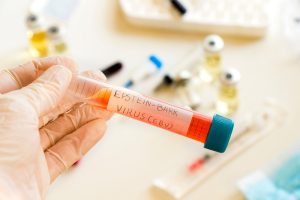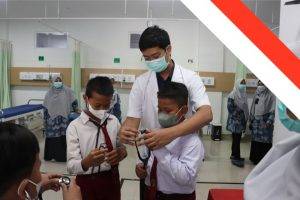Speaker:
- Dr Lee Guan Huei 李冠辉, Senior Consultant, Gastroenterology, NUH
Sponsors/Organising parties:
- 365 Cancer Prevention Society (365CPS), Singapore
- National University Hospital (NUH), Singapore
- National University Cancer Institute, Singapore (NCIS), Singapore
Date: 16 Oct 2021, Saturday
Time: 8-9pm (GMT +8)
We have Dr Lee Guan Huei, Senior Consultant, Gastroenterology, NUH, to talk to us about Liver cancer: Diagnosis and Treatment. This is proudly organised by 365 Cancer Prevention Society (365 CPS), National University Hospital (NUH), and National University Cancer Institute Singapore (NCIS).
For Part 1 of the forum, we have Dr Lee give us a short presentation about liver cancer: the causes, risk factors, diagnosis and treatment as well as complications of liver cancer. In Part 2, Dr Lee answers some of the questions posted by the audience. Read below to find out more about liver cancer that you can share with your loved ones!
Question and Answer
Q1: How can fatty liver disease be prevented?
Fatty liver disease can be caused by many reasons. It is generally a result of the excessive accumulation of fats in liver cells.
In the past, fatty liver was often due to high alcohol intake. However, recently, there is an increasing number of patients who develop fatty liver disease despite not being heavy drinkers. Fatty liver in this group of people could be attributed to obesity, genes, high cholesterol, high blood pressure, and diabetes, or other metabolic syndromes.
Q2: Are liver tumour marker tests accurate?
About 60% to 70% of liver cancer tumours will cause high alpha-fetoprotein (AFP). Some tumours, despite being large, may not result in a high AFP.
In the diagnosis for liver cancer, clinicians will not rely on tumour marker tests alone, instead, they will look at the patient holistically e.g., including imaging scans. Usually if a patient presents with a sudden surge in AFP levels, imaging scans will be done to check if the increase is associated with liver cancer.
Nonetheless, the tumour marker test is not recommended to be used as a regular screening tool during routine health check-ups as it is not very accurate. This is because AFP levels might be slightly elevated in individuals without liver cancer, which could result in a lot of unnecessary tests being carried out.
Q3: Will taking omeprazole long-term lead to liver cirrhosis?
Omeprazole is a medication used to manage gastric acid problems. It has been used for many years and is relatively safe. However, regardless of safety, all medications come with side effects, but these side effects do not include liver cirrhosis.
If you do not have any gastric related issues, there is no need to take omeprazole unnecessarily. It is important to discuss with your doctor regarding your indication for omeprazole.
Q4: How should skinny people with fatty liver disease be managed?
Generally, for obese patients, it is recommended that they lose weight. However, for patients whose fatty liver disease is caused by genetic reasons or metabolic syndrome, the benefit of weight loss for them is limited.
Some patients are thin, but due to a lack of physical activity, the proportion of muscle and fat in the body is imbalanced. In such situations, patients are encouraged to exercise more, and reduce their consumption of sugar and fat.
For patients who have already tried losing weight, yet are still unable to reduce the rate of inflammation from their fatty liver disease, medical treatment will then be employed.
Q5: What is the prognosis if the liver cirrhosis causes ascites?
Ascites is a condition where fluids accumulate in the spaces of the abdomen and is a sign of worsening liver cirrhosis (late stage of liver scarring). The severity of liver cirrhosis may be classified from stage A to C. Patients who present with ascites often belong to stage B or stage C.
With regards to prognosis, there is no definite answer. Physicians will need to consider the presence of ascites along with other blood investigations e.g., tumour marker levels, to determine the severity and prognosis.
Q6: Can fatty liver disease be treated with traditional Chinese medication (TCM)?
At present, there is insufficient evidence. Also, as I do not specialise in TCM, this is not something I can comment on.
However, the diagnosis of fatty liver disease requires the use of scans and blood tests. Without them, it would be difficult to determine the effectiveness of the treatment.
In addition, TCM does not have randomised clinical trials to test their effectiveness, making it difficult for me to make any remarks about it.
Q7: My body mass index (BMI) is 21, and cholesterol levels are normal. I exercise often and do not consume any alcohol. But, I still have fatty liver disease. I am also a carrier of hepatitis B. Is it true that patients with hepatitis B will get fatty liver disease more easily?
No, amongst patients with hepatitis (inflammation of the liver) who are diagnosed with fatty liver disease, it is most frequently seen in those with hepatitis C. Hepatitis B rarely causes fatty liver disease. Mild fatty liver disease is quite commonly seen in adults > 50 years old.
For your case, it is most likely a coincidence, but I would still require more information on your family history, blood sugar and cholesterol levels to determine.
Q8: I have high cholesterol and am on simvastatin (cholesterol medication) for it. Will it cause liver cancer?
In a small group of patients taking simvastatin, it might cause mild liver inflammation. However, research shows that it is unlikely to result in liver cirrhosis.
There are patients who may experience worsening liver inflammation, resulting in the termination of medical treatment, but, generally if a patient’s liver function is normal, this medication will unlikely give rise to liver cancer.
Q9: If my BMI is normal, but I have a big stomach, will it increase my risk for liver cancer?
A regular BMI suggests that the proportion of height and weight is normal.
With regards to having a big stomach, each person possesses a different body shape (e.g., apple or pear shaped). This is something that we are born with and is associated with the way our body distributes fat.
For apple-shaped patients, the fat tends to distribute and accumulate in their organs. Hence, these groups of people do have a higher risk for fatty liver disease, but this is not absolute, and will still require further investigations to confirm it.
Q10: Is it dangerous if the liver has blisters?
Blisters in the liver are usually found randomly by chance when ultrasound scans are performed. It is similar to a mole on the skin. Blisters in the liver are not normal, but are usually benign; although 1 in 1000 moles could be cancerous.
If thickening of the skin outside the blister is observed, it will be closely monitored as it possesses a small cancer risk.
Q11: Can fatty liver disease be cured completely?
Yes, it is possible for fatty liver disease to be cured completely. The most common treatment method is through lifestyle modifications e.g., diet and exercise. If an obese person can slim down significantly, the fatty liver disease could be cured.
However, if the fatty liver disease is of a genetic nature, for example, individuals may still retain mild fatty deposits, which cannot be removed completely. However, such low levels of fats rarely cause serious liver cirrhosis risks.
Fatty liver disease is not the most crucial issue, what is important is whether it causes inflammation.
Q12: Why is it that during initial treatment, a person may be diagnosed with stage 2 liver cancer, but after the next scan it can suddenly progress to stage 4?
It is not easy to confirm the progression of malignant cells, and some tend to be more aggressive.
The difference between a stage 2 and stage 4 cancer, is based on whether the cancer has spread to other parts of the body.
It is possible that at the start, cancer cells in the lung/lymphatic system that are < 1 cm in size, go undetected by initial scans. However, in subsequent scans, they can be identified as they might have grown larger.
Q13: Is it possible for the liver to grow back after re-sectioning (removal of tissue, part or all of the organ)?
The liver is a very special organ and is able to regenerate. This is why there are live donors for liver transplants. As long as the liver is healthy, it can regain its original weight within 3 months.
Q14: Can liver cancer be passed down to future generations?
For cancers typically, they may be genetic. However, for liver cancer, genes are not the main cause for it.
Liver cancer is often due to hepatitis B. These patients are usually infected during birth from contact with maternal blood. Therefore, it is related more to the infectious nature of hepatitis and not genes.
If liver cancer is found in persons who are 20 to 30 years old, then it is likely genetic.
Q15: What types of food can/cannot be eaten by liver cancer patients?
Liver cancer patients actually do not have much dietary restrictions, but patients with liver cirrhosis might. However, this ultimately depends on the patient’s liver and body function, and is something that needs to be discussed with a doctor.
For ascitic patients, it is recommended that they limit their salt and fluid intake.
For malnourished patients, increasing their protein consumption is recommended. However, for those with brain disease, the opposite is encouraged.
For those with fatty liver disease, eating less sugar and fat would be ideal.
Q16: Will having hepatitis B antibodies reduce the risk for liver cancer?
The hepatitis B virus can incorporate its DNA into that of the liver cells, resulting in DNA changes that increases the risk for liver cancer. There is a 100-fold increase in probability of liver cancer in a patient with hepatitis B compared to a patient without it.
Q17: Can we see any signs and symptoms to detect liver disease?
Our liver has many functions. For symptoms to show, liver damage has to reach about > 50% to 60%. In the early stages, jaundice (yellowing of eyes and skin), palm redness, and spider-like veins in the neck might be observed. If such symptoms are seen, medical attention should be sought.
Q18: What are the treatment options for ascites, and can it be cured completely?
Ascites is due to liver cirrhosis and fibrosis (scarring of the liver). When blood is flowing through the fibrosed liver blood vessels, it experiences great resistance. This pressure results in the accumulation of a large amount of water.
There are limited treatment options available, and the best one is to get a liver transplant. Another method is to make lifestyle modifications by restricting salt and fluid intake. Medications can also be prescribed to help the body get rid of excess water via the kidneys. Alternatively, water can be removed directly from the abdomen. Also, an artificial blood vessel may be inserted into the liver to promote blood flow and reduce resistance.
However, as the main cause of ascites is cirrhosis, it is usually not easy to treat once a person has advanced to this stage.
Q19: What medications can help the liver to improve its detoxification process?
The liver does not need help to carry out detoxification.
The key factor harming our liver is us not taking good care of it e.g., through poor diet habits resulting in fatty liver disease, insufficient rest, not seeking treatment for hepatitis B, alcoholism, and drug abuse.
Instead of taking detox medications, it is better to avoid consuming unnecessary medications which will increase the workload of the liver.
What’s next in store?
Click here to read the summary of Dr Lee’s presentation in Part 1 if you have missed it!
Watch the full video on 365 Cancer Prevention Society’s Facebook page!












